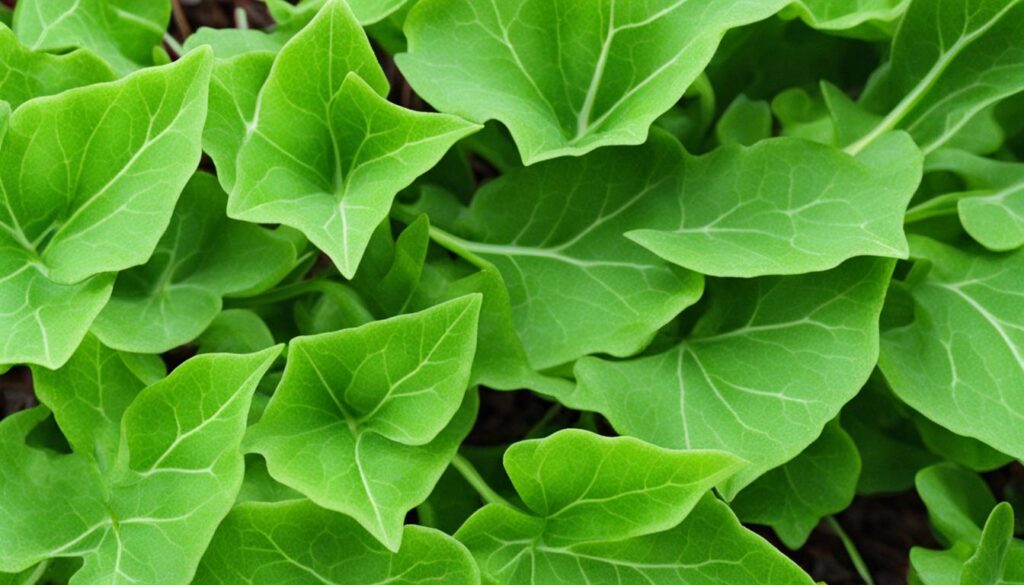Are you curious about how to identify wild lettuce in the great outdoors? Look no further! In this guide, I’ll walk you through the process of distinguishing wild lettuce from other plants, sharing valuable tips and visual cues along the way. By the end, you’ll have the knowledge you need to recognize this fascinating plant with ease.
How to Identify Wild Lettuce
- Wild lettuce can be identified by its distinctive characteristics and visual cues.
- Look for the presence of trichomes (hairs) on the underside of each leaf along the midrib.
- Wild lettuce has a triangular cross-section on the midrib.
- Be cautious when distinguishing wild lettuce from its look-alike plants such as dandelion, sow thistle, and thistle.
- Wild lettuce can be found in various regions worldwide, particularly in water-rich environments.
Understanding Wild Lettuce Species
Wild lettuce belongs to the Lactuca genus and the Cichorieae tribe of the Asteraceae family. The focus of this article is on Canadian Wild Lettuce (Lactuca canadensis) and Prickly Lettuce or Wild “Opium” Lettuce (Lactuca serriola), as they are the most commonly encountered species. However, the identification principles mentioned apply to other species in the genus as well.
Canadian Wild Lettuce (Lactuca canadensis)
Canadian Wild Lettuce is a perennial plant that typically grows up to 1.5 meters tall. It has large, toothed leaves with a bluish-green tint. The flowers are bright yellow and bloom from June to August. This species is often found in open fields, meadows, and disturbed areas across North America.
Prickly Lettuce or Wild “Opium” Lettuce (Lactuca serriola)
Prickly Lettuce or Wild “Opium” Lettuce is an annual or biennial plant that can grow up to 2 meters tall. It has deeply lobed leaves with sharp prickles along the edges. The flowers are yellow and bloom from June to October. This species is commonly found in waste areas, roadsides, and disturbed habitats.
By understanding the different species of wild lettuce, you can enhance your ability to identify them accurately in the wild. Remember to consider factors such as leaf shape, color, flower appearance, and habitat preferences when distinguishing between Canadian Wild Lettuce and Prickly Lettuce.
Characteristics of Wild Lettuce
Wild lettuce, also known as Lactuca canadensis or Prickly Lettuce, is a weedy biennial plant that can be easily identified by its unique characteristics. In its first year, it grows as a basal rosette with leaves that form a circular shape close to the ground. In the second year, it produces a tall stalk with small yellow flowers.
One of the key features of wild lettuce is its simple leaves that alternate along the stalk. These leaves often clasp the stalk and have a distinctive appearance. When you cut the stem or leaves of wild lettuce, it exudes a white milky latex, which is a defining characteristic of the plant.
Another distinguishing feature of wild lettuce is the presence of trichomes, or small hairs, on the underside of each leaf along the midrib. These hairs give the leaf a slightly fuzzy texture when touched. Additionally, the midrib of the leaf has a triangular cross-section, providing further visual cues for identification.
Identifying Wild Lettuce: A Visual Guide
By familiarizing yourself with these characteristics and observing wild lettuce in its natural habitat, you can confidently identify this plant during your outdoor adventures. However, it’s important to note that wild lettuce can resemble other plants, such as dandelions and sow thistles. Therefore, it’s crucial to pay attention to the specific features mentioned above to ensure accurate identification.
In the next section of this guide, I will discuss how to distinguish wild lettuce from its look-alike plants, providing you with additional tips to avoid any confusion and safely recognize wild lettuce in the wild.
Distinguishing Wild Lettuce from Look-Alike Plants
When foraging for wild lettuce, it’s important to be able to distinguish it from other similar-looking plants. Here, I will guide you on how to differentiate wild lettuce from its common look-alikes: dandelion, sow thistle, and thistle.
Identifying Wild Lettuce
One key feature that sets wild lettuce apart is the presence of hairs along the midrib on the underside of each leaf. This is a distinguishing characteristic of wild lettuce and can help you confirm its identity. Another visual cue to look out for is the shape of the midrib cross-section, which is triangular in wild lettuce.
Distinguishing from Dandelion
Although dandelion leaves may resemble wild lettuce leaves, dandelion leaves lack the midrib hairs present in wild lettuce. Additionally, dandelion leaves typically have a jagged or toothed edge, while wild lettuce leaves have smooth edges.
Distinguishing from Sow Thistle and Thistle
Sow thistle and thistle also have leaves that may resemble wild lettuce, but they lack the characteristic midrib hairs. Sow thistle leaves have a soft and somewhat hairy texture, while thistle leaves often have prickles or spines. These distinguishing features can help differentiate them from wild lettuce.


Where to Find Wild Lettuce
If you’re interested in foraging for wild lettuce, there are several regions where you can find it. Coastal regions of Great Britain, Central and Southern Europe, Pakistan, India, Iran, Australia, and non-native regions in North America are known to have wild lettuce populations. This versatile plant thrives in water-rich environments, so keep an eye out for it near rivers and other water sources.
Identifying wild lettuce in the wild can be made easier by looking out for its distinctive characteristics. The plant has bright-green oblong and lance-shaped leaves with fine teeth-like ridges. One key visual cue is the presence of small hairs on the underside of each leaf along the main vein. These features make wild lettuce stand out among other plants in its surroundings.
Remember, when foraging for any plant, it’s important to exercise caution and ensure you have proper identification. Consult reliable resources and field guides to confidently identify wild lettuce and avoid any potential risks or confusion with similar-looking plants. By understanding where to find wild lettuce and how to identify it, you can add this versatile plant to your foraging repertoire.
Historical and Medicinal Uses of Wild Lettuce
Wild lettuce has a fascinating history of medicinal uses that dates back centuries. In ancient Egypt, it was believed to have various healing properties and was used for its sedative effects. Chinese practices also incorporated wild lettuce for its therapeutic benefits. It gained popularity in the 19th century when physicians began using it as a substitute for opium and other narcotics, due to its pain-relieving properties.
Today, wild lettuce continues to be used in folk medicine and naturopathy. It is valued for its throat-soothing abilities, sleep-promoting effects, and nerve-calming properties. Many people turn to wild lettuce to alleviate pain, promote relaxation, and aid in sleep. It is also known for its potential to help regulate menstruation and possesses antibacterial properties.
However, it’s important to note that the effects and pain-relieving potential of wild lettuce are still a subject of debate within the medical community. While some individuals find relief and benefit from its usage, it might not work the same way for everyone. As with any herbal remedy, it’s crucial to approach wild lettuce with caution and consult reliable resources to ensure safe and effective use.
Effects and Characteristics of Wild Lettuce
Wild lettuce, with its distinctive characteristics and effects, offers a range of potential benefits. One of its key components is the milky white sap called lactucarium, which gives the plant its unique properties. Rich in phytochemicals like lactucin, wild lettuce is known for its soothing and relaxing effects, making it a popular choice for promoting relaxation and inducing sleep.
Aside from its calming properties, wild lettuce has also been used to soothe the nerves and aid in normal menstruation. Its antibacterial properties further enhance its therapeutic potential. However, it’s important to note that the pain-relieving effects of wild lettuce are still subject to ongoing debate and research.
Understanding the characteristics and effects of wild lettuce can help you make informed decisions about incorporating it into your wellness routine. Its natural composition and potential benefits make it a valuable addition to the world of herbal remedies. Remember to consult reliable resources and professionals to ensure safe and effective use of wild lettuce.
Conclusion
This guide serves as a comprehensive wild lettuce identification resource for foragers and enthusiasts of traditional herbal remedies. By familiarizing yourself with the characteristics, distinguishing features, and visual cues of wild lettuce, you will be able to confidently identify this versatile plant in the wild.
Remember, caution is paramount when working with wild plants. It is advisable to consult reliable resources and experts for guidance on identifying and using wild lettuce safely and effectively. Whether you’re interested in exploring its historical uses, harnessing its medicinal properties, or simply expanding your knowledge of botanical identification, this guide equips you with the necessary tools.
Now armed with the knowledge of wild lettuce’s identification and uses, you can embark on your own wild lettuce journey. Whether you’re foraging for personal use or delving into the world of traditional herbal remedies, the possibilities are endless. So go forth, explore, and embrace the wonders of wild lettuce!
FAQ
How do I identify wild lettuce?
Wild lettuce can be identified by its basal rosette or stalk growth, simple leaves with hairs along the midrib on the underside, and the presence of white milky latex when cut.
What are the distinguishing features of wild lettuce?
Wild lettuce can be distinguished by the presence of hairs along the midrib on the underside of each leaf, triangular cross-section of the midrib, and oblong and lance-shaped leaves with fine teeth-like ridges.
How can I differentiate wild lettuce from look-alike plants?
One key distinguishing feature is the presence of hairs along the midrib on the underside of the leaf, which is characteristic of wild lettuce. Other visual cues, such as the shape of the midrib cross-section, can also help differentiate wild lettuce from its look-alikes.
Where can I find wild lettuce?
Wild lettuce can be found in various regions, including the coastal regions of Great Britain, Central and Southern Europe, Pakistan, India, Iran, Australia, and non-native regions in North America. It is often found near rivers and water-rich environments.
What are the historical and medicinal uses of wild lettuce?
Wild lettuce has a rich history of use as a painkiller, sleep aid, throat-soother, and nerve-calming agent. It has been used in ancient Egypt and traditional Chinese medicine. In the 19th century, physicians used it as a substitute for opium and other narcotics.
What are the effects and characteristics of wild lettuce?
Wild lettuce contains lactucarium, a white milky sap that gives the plant its distinctive characteristics. Lactucarium contains phytochemicals, including lactucin, which is known for its relaxing and soothing effects. It is often used to promote relaxation, induce sleep, soothe the nerves, and aid in normal menstruation. It also possesses antibacterial properties. However, the effects and pain-relieving potential of wild lettuce are still widely debated.
Can wild lettuce be used safely?
While wild lettuce has been used in folk medicine and naturopathy, it is important to exercise caution. Consult reliable resources for guidance on using wild lettuce safely and effectively.








